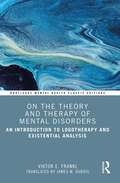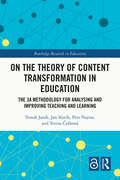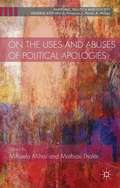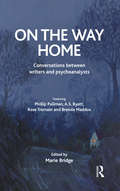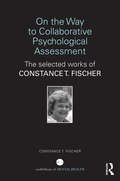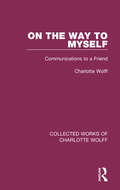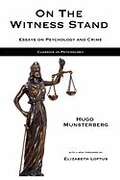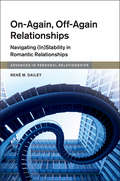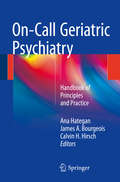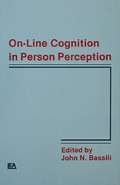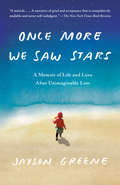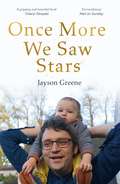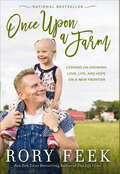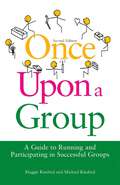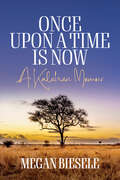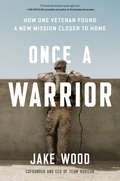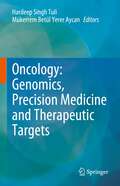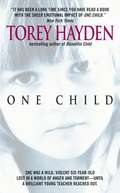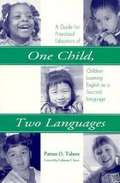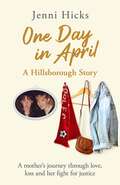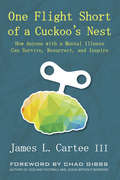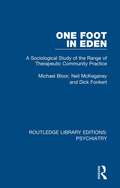- Table View
- List View
On the Theory and Therapy of Mental Disorders: An Introduction to Logotherapy and Existential Analysis (Routledge Mental Health Classic Editions)
by Viktor E. FranklThis Classic Edition of On the Theory and Therapy of Mental Disorders: An Introduction to Logotherapy and Existential Analysis sees Viktor E. Frankl, bestselling author and founder of logotherapy, introduce his key theories and apply them to work with patients exhibiting symptoms of neurosis.James M. DuBois’ translation of Frankl’s Theorie und Therapie der Neurosen allows English readers to experience this essential text on logotherapy in an invigorating new light. DuBois also provides a new Preface to the book, highlighting the importance of both the original volume and Frankl’s work at large, and framing it within contemporary psychotherapy and psychoanalysis. Throughout the book, Frankl uses his unique logotherapeutic approach to analyse neuroses and their impact. He looks in turn at how neuroses may be informed by psychoses, somatic disorders, and the mental implications of being diagnosed with a physical medical condition, as well as potential psychological, spiritual, and societal causes of neuroses.Masterfully translated and thoroughly annotated, this volume brings Frankl’s trailblazing theories into the 21st century and will be of great interest to psychiatrists and psychotherapists alike.
On the Theory of Content Transformation in Education: The 3A Methodology for Analysing and Improving Teaching and Learning (Routledge Research in Education)
by Tomáš Janík Jan Slavík Petr Najvar Tereza ČeškováThis volume presents a novel, theoretical, micro-analytical model – the 3A Methodology – for assessing the quality of school education.Drawing on philosophers as well as theoretical and pedagogical traditions from European and American contexts, the authors construct a model that is relevant to teachers, researchers, and teacher educators regardless of cultural setting. The chapters explain the 3A Methodology as a specific research tool developed to study classroom situations in the form of case studies, revealing findings that demonstrate prototypical failures (didactic formalism) that threaten to compromise the quality of learning as well as prototypical didactic virtues that verifiably support students’ learning. Ultimately building on the distinction of three modes of existence of educational content (the intersubjective, the subjective, and the objective modes), the book helps rediscover didactics as a transdisciplinary theory of content transformation and contributes to the improvement of teaching and learning in the classroom long term.This volume will be of interest to scholars, researchers, and postgraduate students working in school education, educational psychology, and didactics more broadly. Teacher educators and school administrators may also find the book of interest.Chapters 1, 3, and 6 of this book is freely available as a downloadable Open Access PDF at http://www.taylorfrancis.com under a Creative Commons Attribution-Non Commercial-No Derivatives (CC-BY-NC-ND) 4.0 license.
On the Uses and Abuses of Political Apologies
by Mihaela Mihai Mathias ThalerRecent decades have witnessed a sharp rise in the number of state apologies for historical and more recent injustices, ranging from enslavement to displacement and from violations of treaties to war crimes, all providing the backdrop to displays of official regret. Featuring a host of leading authors in the field, this book seeks to contribute to the growing literature on official apologies by effectively combining philosophical reflection and empirical analysis. It achieves two interrelated goals: it enriches the theoretical debates on the nature and functions of apologies while bringing forth new insights from hitherto unexamined normative horizons. It further addresses often overlooked aspects of political apologies, such as their non-verbal dimension as well as religious overtones, while testing theoretical reflections through encounters with real practices of state apologies. Finally, the book explores the obstacles to, and the limitations of, political apologies. The result is an excellent interdisciplinary volume that affords the reader a better understanding of conditions for a legitimate and successful state apology.
On the Way Home: Conversations Between Writers and Psychoanalysts
by Marie BridgeLiterature was present at the birth of psychoanalysis. When Freud made his momentous discovery of the Oedipus complex within himself and his patients, he recognised that this psychic configuration had already been depicted in Sophocles's tragedy. The father of psychoanalysis wrote "The poets and philosophers before me discovered the unconscious... What I discovered was only the scientific method by which the unconscious might be studied". On the Way Home is a collection of public dialogues which bring together authors whose work similarly provokes recognition and resonance in the minds of readers; analysts with a professional and passionate interest in the unconscious and a wish to learn from writers; and a wide audience of people interested in literature and psychoanalysis. The dialogues intend to forge links between psychoanalysis and other disciplines, including the physical and the social sciences, history and literature. They are held at the Institute of Psychoanalysis and attract a wide audience.
On the Way to Collaborative Psychological Assessment: The Selected Works of Constance T. Fischer (World Library of Mental Health)
by Constance T FischerThis collection of articles by Constance T. Fischer represents many of her major contributions to Collaborative Therapeutic Assessment. Fischer’s work on the conceptual foundations and practices for individualized/ collaborative psychological assessment are assembled in this volume. Also included are her thoughts about how to teach individualized assessment to students. This monograph will serve mental health professionals interested in Collaborative Therapeutic Assessment and instructors and students in graduate courses on psychological assessment.
On the Way to Myself: Communications to a Friend (Collected Works of Charlotte Wolff #4)
by Charlotte WolffOriginally published in 1969, Dr Charlotte Wolff was the author of three books of psychology: The Human Hand, A Psychology of Gesture and The Hand in Psychological Diagnosis. This book, though it contains much psychology, is not of the same scientific kind as these. It is an autobiography, but not one of the normal kind. It is the history of a mind, not the chronicle of a life. For this reason it is not arranged chronologically but it is constructed round what the author called the creative shock experiences of her life, some of which belong with their consequences rather than with events adjacent in time. The resulting book is one of imaginative psychology. In the course of a life which began on the borders of Poland and carried her to Germany, France, Russia and England, Dr Wolff had met and known many of the most famous writers, artists and thinkers of the time. In Germany she studied under the founding Existentialists, Husserl and Heidegger; in France she carried out psychological research under Professor Henri Wallon and was also assisted by the Surrealists, André Breton, St. Exupéry, Paul Eluard; in England she was aided in her work by Sir Julian Huxley, Aldous Huxley and his wife, Dr William Stephenson, Dr Earle and others. But Dr Wolff’s earliest creative work was as a poet, and though she turned to psychology, her interest in art brought her into touch at different times with Ravel, Virginia Woolf, Bernard Shaw, Lady Ottoline Morrell, Thomas and Heinrich Mann, Baladine Klossowska and many more. Dr Earle wrote of her that she is ‘an artist of psychology’, and it is thus that she appears in this odd and fascinating book. Today it is an interesting glimpse in to the life of an early feminist psychologist. Her later research focused on sexology, her writing on lesbianism and bisexuality were influential early works in the field.
On the Witness Stand: Essays on Psychology and Crime
by Hugo MunsterbergOriginally published by the author in 1908, this classic treatise applies experimental methods to the courtroom and is the foundational text of forensic psychology. With a new foreword by psychologist Elizabeth Loftus (author of Witness for the Defense, Eyewitness Testimony, and The Myth of Repressed Memory) the impact of this work continues to be felt a century after its initial publication. Topics in the book include: the memory of the witness, the detection of crime, untrue confessions, suggestions in court, hypnotism and crime, illusions, and the prevention of crime.
On-Again, Off-Again Relationships: Navigating (In)Stability in Romantic Relationships (Advances in Personal Relationships)
by René M. DaileyIn a world where we have an endless number of options to swipe through, why do many of us repeatedly return to previous romantic partners? This book addresses this question by synthesizing the research on relationships that break up and renew (i.e. 'on-again, off-again' relationships) from various disciplines including communication, social psychology, family studies, and sociology. It explicates the various types and trajectories of on-again, off-again relationships, and uncovers how these relationships are different from those that do not split up and reconcile. Because on-again, off-again relationships challenge traditional notions of relationship stability and highlight the fluctuating nature of relationships, alternative conceptualizations of stability are also reviewed. This book is a theoretical and practical resource for researchers, students, and professionals interested in understanding why partners repeatedly reconcile with ex-partners.
On-Call Geriatric Psychiatry
by James A. Bourgeois Ana Hategan Calvin H. HirschThis text covers basic principles and practice of on-call psychiatric care in the geriatric patient in various medical settings. It compiles the most likely complaints and provides assessment and management tools for each situation. Written and edited by expert geriatric psychiatrists, emergency psychiatrists, consultation/liaison psychiatrists, geriatricians, and other multidisciplinary specialists, this is the first handbook devoted to on-call geriatric psychiatry. Chapters contain an important summary of key points for managing clinical situations, case studies, and reflective questions. This text brings together relevant principles of on-call geriatric psychiatry provided in clinical settings such as emergency, acute and subacute inpatient, outpatient, residential, correctional, and consultation/liaison. It includes clinical topics such as psychopharmacology, psychotherapy, substance abuse, and includes coverage of medical ethics and the law, utilization of contemporary technology, and administrative and public health policy. On-Call Geriatric Psychiatry is the first practical guide to knit together evidence-based medicine and geriatric psychiatric principles and practice guidelines and is a valuable resource for trainees, psychiatrists, geriatricians, emergency departments, nursing home physicians, and other health professionals working with older adult patients.
On-line Cognition in Person Perception
by John N. BassiliThe contributors to this collection focus on the cognitive processes that take place during the initial acquisition of information about others (on-line processes) rather than later when memory processes begin playing a dominant role (memory-based processes). Utilizing the methods and concepts of social cognition, the book illustrates how the study of on-line cognition can further our understanding of person perception. On-Line Cognition in Person Perception also examines the special cognitive dynamics that are associated with such processes within the domain of social perception.
Once More We Saw Stars: A Memoir
by Jayson Greene<P><P>For readers of The Bright Hour and When Breath Becomes Air, a moving, transcendent memoir of loss and a stunning exploration of marriage in the wake of unimaginable grief. <P><P>As the book opens: two-year-old Greta Greene is sitting with her grandmother on a park bench on the Upper West Side of Manhattan. A brick crumbles from a windowsill overhead, striking her unconscious, and she is immediately rushed to the hospital. <P><P>But although it begins with this event and with the anguish Jayson and his wife, Stacy, confront in the wake of their daughter's trauma and the hours leading up to her death, Once More We Saw Stars quickly becomes a narrative that is as much about hope and healing as it is about grief and loss. <P><P>Jayson recognizes, even in the midst of his ordeal, that there will be a life for him beyond it--that if only he can continue moving forward, from one moment to the next, he will survive what seems unsurvivable. <P><P>With raw honesty, deep emotion, and exquisite tenderness, he captures both the fragility of life and absoluteness of death, and most important of all, the unconquerable power of love. This is an unforgettable memoir of courage and transformation--and a book that will change the way you look at the world.
Once More We Saw Stars: A Memoir of Life and Love After Unimaginable Loss - as listed in Time's 100 Must-Read Books of 2019
by Jayson GreeneListed in Time's 100 Must-Read Books of 2019'A gripping and beautiful book about the power of love in the face of unimaginable loss' Cheryl Strayed'Extraordinary . . . both heartbreaking and life-affirming . . . you will find your heart magically expanded'Mail on Sunday'Greene's account of his loss is remarkably uplifting. It's hard-won proof that love can survive our worst fears and our darkest, most desperate emotions.'Daily Mail'This minutely observed memoir will surely be helpful to people whose world changes in an instant . . . a hopeful book in many ways'The Times'Wonderful writing, brave, unbearably sad'Adam KayTwo-year-old Greta Greene is sitting chatting with her grandmother on a park bench in New York when a brick crumbles from a windowsill overhead and strikes her unconscious. As she is rushed to hospital in the hours before her death Once More We Stars leads us into the unimaginable.Her father Jayson and mother Stacy begin a painful journey that is as much about hope and healing as it is grief and loss. Even in the midst of his ordeal, Jayson recognises that there will be a life for him beyond it - if he can only continue moving forward, from one moment to the next, he will survive what seems un-survivable. With raw honesty, deep emotion, and exquisite tenderness, he captures the fragility of life and the absoluteness of death, and most important of all, the unconquerable power of love. This is an unforgettable memoir of courage and transformation - and a book that will change the way you look at the world.
Once Upon a Farm: Lessons on Growing Love, Life, and Hope on a New Frontier
by Rory FeekNational BestsellerSometimes it&’s not only what we plant but where we&’re planted.Now raising their four-year-old daughter, Indiana, alone, after Joey&’s passing, Rory Feek digs deeper into the soil of his life and the unusual choices he and his wife, Joey, made together and the ones he&’s making now to lead his family into the future. When Rory Feek and his older daughters moved into a run-down farmhouse almost twenty years ago, he had no idea of the almost fairy-tale love story that was going to unfold on that small piece of Tennessee land . . . and the lessons he and his family would learn along the way.Now two years after Joey&’s passing, as Rory takes their four-year-old daughter Indiana&’s hand and walks forward into an unknown future, he takes readers on his incredible journey from heartbreak to hope and, ultimately, the kind of healing that comes only through faith.A raw and vulnerable look deeper into Rory&’s heart, Once Upon a Farm is filled with powerful stories of love, life, and hope and the insights that one extraordinary, ordinary man in bib overalls has gleamed along the way.As opposed to homesteading, this is instead a book on lifesteading as Rory learns to cultivate faith, love, and fatherhood on a small farm while doing everything, at times, but farming. With frequent stories of his and Joey&’s years together, and how those guide his life today, Rory unpacks just what it means to be open to new experiences.&“This isn&’t a how-to book; it&’s more of a how we, or more accurately, how He, God, planted us on a few acres of land and grew something bigger than Joey or I could have ever imagined.&”
Once Upon a Group
by Maggie Kindred Michael KindredGroups are a universal phenomenon, but their dynamics, make-up and customs can vary widely - a group can be anything from a family to a sports club. Having a good understanding of how groups work can make them more effective, enriching and fun. Once Upon a Group is a short, light-hearted guide to groupwork, providing an easily-digestible way of understanding group dynamics, the practicalities of running a group, and how to participate in one. It covers how and where to set up a group, including the type of room used, the size of the group and the arrangement of chairs, and the importance of boundaries and rules within a group. It also covers issues such as communication, sensitivity, listening, leadership, decision-making, labelling and stereotyping, and forms of participation, among many others. Each topic is illustrated with a lively drawing to communicate the ideas presented. This second edition also covers diversity throughout and how to apply the ideas in the book to different settings. Based on research but written in an instantly accessible style, this fun guide will be essential reading for all those involved in groupwork including health and social care practitioners, volunteers, advice workers, youth workers and students.
Once Upon a Time is Now: A Kalahari Memoir
by Megan BieseleFifty years after her first fieldwork with Ju/'hoan San hunter-gatherers, anthropologist Megan Biesele has written this exceptional memoir based on personal journals she wrote at the time. The treasure trove of vivid learning experiences and nightly ponderings she found has led to a memoir of rare value to anthropology students and academics as well as to general readers. Her experiences focus on the long-lived healing dance, known to many as the trance dance, and the intricate beliefs, artistry, and social system that support it. She describes her immersion in a creative community enlivened and kept healthy by that dance, which she calls "one of the great intellectual achievements of humankind." From the Preface: A few years ago I finally got around to looking back into the box of personal field journals I had not opened for over forty years. I found a treasure trove. It was an overwhelming experience. So much that I had forgotten came vividly alive: I laughed, wept, and was terrified all over again at my temerity in taking on what I had taken on. To do justice to the richness of these notebooks, I realized, I would have to do a completely different sort of writing from anything I had ever done before.
Once a Warrior: How One Veteran Found a New Mission Closer to Home
by Jake Wood"The book that America needs right now."--Tom Brokaw, journalist and author of The Greatest GenerationWhen Marine sniper Jake Wood arrived in the States after two bloody tours in Iraq and Afghanistan, he wasn't leaving war behind him--far from it. Ten years after returning home, Jake's unit lost more men to suicide than to enemy hands overseas. He watched in horror as his best friend and fellow Marine, Clay Hunt, plunged into depression upon returning, stripped of his purpose, community, and sense of identity. Despite Jake's attempts to intervene, Clay died by suicide, alone. Reeling, Jake remembered how only one thing had given Clay a measure of hope: joining him in Haiti on a ragtag mission to save lives immediately following the 2010 earthquake. His military training had rendered him unusually effective in high-stakes situations. What if there was a way to help stricken communities while providing a new mission to veterans? In this inspiring memoir, Jake recounts how, over the past 10 years, he and his team have recruited over 130,000 volunteers to his disaster response organization Team Rubicon. Racing against the clock, these veterans battle hurricanes, tornados, wildfires, pandemics, and civil wars, while rediscovering their life's purpose along the way.Once a Warrior provides a gut-wrenching account of the true cost of our Forever Wars--and more importantly, a glimpse of what might become of America's next greatest generation.
Once a Wolf: The Science Behind Our Dogs? Astonishing Genetic Evolution
by Bryan SykesThe author of Seven Daughters of Eve returns with a lively account of how all dogs are descended from a mere handful of wolves. How did wolves evolve into dogs? When did this happen, and what role did humans play? Oxford geneticist Bryan Sykes used the full array of modern technology to explore the canine genetic journey that likely began when a human child decided to adopt a wolf cub thousands of years ago. In the process, he discovered that only a handful of genes have created the huge range of shapes, sizes, and colors in modern dogs. Providing scientific insight into these adaptive stages, Sykes focuses attention on our own species, and how our own evolution from (perhaps equally aggressive) primates was enhanced by this most unlikely ally. Whether examining our obsession with canine purity, or delving into the prehistoric past to answer the most fundamental question of all, “Why do we love our dog so much?,” Once a Wolf is an engaging work no dog lover or ancestry aficionado should be without.
Oncology: Genomics, Precision Medicine and Therapeutic Targets
by Hardeep Singh Tuli Mükerrem Betül Yerer AycanThis book describes translational cancer therapeutics and the way forward from clinical and molecular diagnosis to treatment. In addition, genomics alterations, microRNAs, and long non-coding RNAs translate precision medicine for the individualistic therapy of cancer patients. It describes the involvement of various pharmacogenetic factors in pharmacodynamic/pharmacokinetic (PD/PK) modulations of medicines. Indeed, the role of bioinformatics and biostatistics, considering the extensive data analysis serving precision medicine approaches, has also been entertained in the present book. Therefore, intended book demonstrates the successful medical evidence for the use of precision medicine in the treatment of cancer and its future clinical perspectives. It fills the gaps in cancer biology and precision medicine with its up-to-date content and well-designed chapters. It will serve as a valuable resource for science, medical students, and interdisciplinary researchers. It is a very welcome addition for the scientific community, research centers, and university-industry research collaborators to find out a complete capsular package about cancer drug targets, precision, and personalized medicine (including an introduction to cancer cell signaling, genomic alterations, miRNA targeting, pharmacogenetics, biomarkers, and metabolomics in precision medicine, etc.) at a single platform.
One Breath Apart: Facing Dissection
by Sandra L BertmanWhat started in the mid-seventies as brown-bag lunchtime optional seminars for students, faculty, and staff of the (then) University of Massachusetts Medical Center evolved into a magnificent project. The medical students' courageous willingness to acknowledge their feelings about death and dissection has made this book possible. It is our hope that this slim volume - this collection of words and images created by the medical students at University of Massachusetts during the last thirty years (and augmented by Meryl Levin's documentary photographs of students from Weill Medical College of Cornell University and their journal entries written in 1998 and published in "Anatomy of Anatomy") - will provide you with what good doctors provide for their patients: catharsis, personal insights, and support. From the Foreword: 'One of the enduring images of my first year in medical school is the narrow, unshaven face of Ernest, the cadaver I shared with three classmates whose names I can't remember. We named him 'Ernest', so we could impress our parents by telling them how we were working in dead earnest. In reality, like most cadavers in those days, he was an anonymous indigent man who died in the county home and whose remains were used for our education without his consent. My group was considered lucky because cancer had burned away every bit of Ernest's fat, thus making him an excellent 'specimen' for dissection. Even then I knew that Ernest was more than a specimen, but it took a long time to understand that he was actually my first mentor in the joys and sorrows and successes and failures of medicine. Surprisingly, it was Ernest rather than my basic science professors - the living ones, that is - who provoked the most important questions about what it means to be a doctor and forced me to confront them. As I recall, though, this was a solitary process because my classmates and I never discussed, or perhaps even admitted to ourselves, our feelings of ambivalence, fear, pain, gratitude, and exultation, or the changes in us as persons during the first year of medical school. We tried to hide all this because at the time that's what doctors were supposed to do. Today things are different. As students at UMass, you are especially privileged to have a module like "One Breath Apart" integrated into your anatomy experience. This module provides you the opportunity to explore and share your personal responses to dissection, and with this publication it gives you access to an additional resource: a splendid introduction to the written and visual tradition established by UMass students over the last two decades, along with evocative photographs and journal entries from the medical students at Cornell, documented by Meryl Levin in "Anatomy of Anatomy". As I read through this book, I was struck by the Nancy Long's title poem. She writes, 'I pretended you were here/To teach me the details'. How reminiscent of my own experience those words are! 'Then I saw your face/And I knew...' That's the turning point. As physicians we can either embark on the journey of learning to see others' faces and to hold their hands, or we can attempt to distance ourselves and focus only on 'details'. This is a decision that every medical student must make, and our cadavers present the first difficult challenge. In a 2006 class poem, UMass students wrote, 'We felt the brain/And imagined its power to create. We held the heart/And imagined its ability to embrace'. These words represent an affirmation of empathy and compassion over detachment. One of the most compelling images of "One Breath Apart" shows the anatomy cadaver as a bridge spanning the chasm that lies between ignorance, darkness, and death on one side and knowledge, health, and life on the other. Dozens of tiny figures march across the span. Like me, they won't forget the backbone of that bridge. As another UMass student writes, 'I know that I will be irrevocably altered" - Jack Coulehan, M.D., Professor of Medicine, Stoney Brook University, NY.
One Child
by Torey HaydenFinally, a beginning...<P><P> The time had finally come. The time I had been waiting for through all these long months that I knew sooner or later had to occur. Now it was here.<P> She had surprised me so much by actually crying that for a moment I did nothing but look at her. Then I gathered her into my arms, hugging her tightly. She clutched onto my shirt so that I could feel the dull pain of her fingers digging into my skin. She cried and cried and cried. I held her and rocked the chair back and on its rear legs, feeling my arms and chest get damp from the tears and her hot breath and the smallness of the room.
One Child, Two Languages: A Guide for Preschool Educators of Children Learning English as a Second Language
by Patton O. TaborsA guide for teachers of preschoolers who come from homes where the dominant language is not English.
One Day in April – A Hillsborough Story: A mother’s journey through love, loss and her fight for justice
by Jenni HicksOn the morning of Saturday 15 April 1989, Jenni Hicks, her husband, and their two teenage daughters, Sarah and Vicki, went to watch a football match. That was to be their last day as a family. Sarah and Vicki didn't come home, and Jenni's world was changed forever. Since that fateful day, Jenni has tirelessly campaigned for justice for her own and others' families. But this is not the story of the Hillsborough tragedy. This is a story of what came before and after that day: of a mother's love, her unimaginable bravery, a flame of hope that never died, and a quest for justice that has lasted three decades. It is a journey that has taken her from Allerton Cemetery to the Courts of Appeal, from the depths of despair to meetings with Prime Ministers and royalty.With the final court cases coming to a conclusion in spring 2021, Jenni's role as the longest-serving committee member of the Hillsborough Family Support Group is coming to an end - and she can finally give herself permission to grieve solely as a mother, rather than as a campaigner. One Day In April is the first time that Jenni has spoken about her story in full, and is a unique and poignant tribute to the lives that Sarah and Vicki lost, and the final word from the extraordinary mother they left behind.
One Day in April – A Hillsborough Story: A mother’s journey through love, loss and her fight for justice
by Jenni HicksOn the morning of Saturday 15 April 1989, Jenni Hicks, her husband, and their two teenage daughters, Sarah and Vicki, went to watch a football match. That was to be their last day as a family. Sarah and Vicki didn't come home, and Jenni's world was changed forever. Since that fateful day, Jenni has tirelessly campaigned for justice for her own and others' families. But this is not the story of the Hillsborough tragedy. This is a story of what came before and after that day: of a mother's love, her unimaginable bravery, a flame of hope that never died, and a quest for justice that has lasted three decades. It is a journey that has taken her from Allerton Cemetery to the Courts of Appeal, from the depths of despair to meetings with Prime Ministers and royalty.With the final court cases coming to a conclusion in spring 2021, Jenni's role as the longest-serving committee member of the Hillsborough Family Support Group is coming to an end - and she can finally give herself permission to grieve solely as a mother, rather than as a campaigner. One Day In April is the first time that Jenni has spoken about her story in full, and is a unique and poignant tribute to the lives that Sarah and Vicki lost, and the final word from the extraordinary mother they left behind.
One Flight Short of a Cuckoo's Nest: How Anyone with a Mental Illness Can Survive, Resurrect, and Inspire
by James L. Cartee IIIIn this memoir, James L. Cartee III challenges our institutions, inlcuding the Church, to face common failings toward those who suffer mental illness, citing that ignorance and a lack of caring often instigate further hardships. Cartee chronicles his journey with mental illness. Time after time, he falls only to rise again and achieve many of his goals, including attaining a graduate degree and traveling around the world. Cartee shares the message of hope that if he, a man from a simple background, can rise above his mental illness, then anyone can--through the strength and grace of God.
One Foot in Eden: A Sociological Study of the Range of Therapeutic Community Practice (Routledge Library Editions: Psychiatry #5)
by Michael Bloor Neil McKeganey Dick FonkertA comparative sociological account of eight different therapeutic communities, One Foot in Eden, originally published in 1988, was the first study in this area to compare observational material from such a large number of settings. The communities chosen represent the wide variety of therapeutic community practice at the time: a residential Rudolf Steiner school for mentally handicapped children; two contrasting residential psychiatric units; a community for the treatment of addiction; a communally organised community for mentally handicapped and disturbed young people; a psychiatric day hospital; and two contrasting halfway houses for disturbed adolescents. All these places are recognised therapeutic communities seeking to mobilise the social life of the community as an instrument of therapy, yet, as this study shows, they follow different (and sometimes antithetical) treatment practices. The book also directs new light on other areas, of particular concern to sociologists, such as the general properties of therapeutic work and the socialisation process as it is experienced by new community residents. It will be of special interest to therapeutic community staff, to sociologists of medicine and occupations, and to others involved in the care of disturbed and handicapped people.
